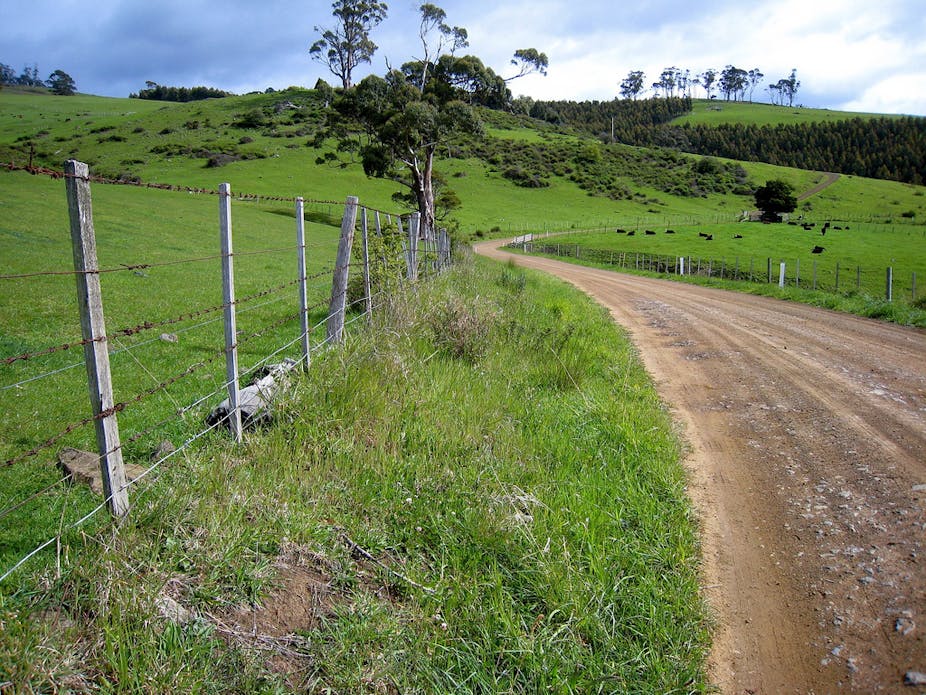The recent report of the Senate Inquiry into rural health services gave tantalising glimpses of how the future of rural health services should be. But its central theme is not new. The persistent and consistent message (that it’s hard to get health professionals to work in rural areas because it’s personally and professionally challenging) does little to get the policies rural communities really need to sustainably address health challenges.
But research considering what would make doctors and nurses (and now allied health professionals) work “out there” lumbers on, considering, for the most part, the carrot or the stick. It misses the fundamental point that addressing rural health care isn’t about providing incentives or bonding individuals, but about changing the system.
Town and country
Rural is not simply urban with trees and animals. And not all rural is alike – coastal, regional and extremely remote areas all have different challenges. To varying degrees, there are fewer people, they’re ageing and they’re sparsely spread. And there isn’t enough local work for specialised practitioners to retain their skills, as noted by the Senate Inquiry.
Increasingly, someone who might be regarded as a specialised practitioner in an urban area (such as a doctor who just works on arms) is dramatically different to what specialisation might be considered in a rural context, where even some allied health professions are considered specialities.
A rural diabetes patient might need dietetics, podiatry, exercise advice, prescribing and pain relief. But requiring a clutch of health professionals each with their delineated specialist role to deal with all of this individual’s needs is unrealistic.
A better approach understands that a set of health and social care competencies are needed locally for flexible practice – continuity and security as opposed to platoons of detached fly- or drive-in, fly- or drive-out specialists.
A new way
Focusing on traditional doctors and nurses is outdated and unsuitable due to modern health needs and demographics.
In a Scottish rural community study, we turned service design on its head and let local citizens decide on priorities. We acted as researchers for communities and provided data and evidence on which to base decisions.
Community members were given the current local health-care budget, and all four communities arrived at similar priorities: the ongoing presence of a locally-resident health practitioner; 24/7 access to triage to detect real emergencies; monitoring of vulnerable people to avoid crisis; local community volunteer activities for health improvement and maintenance, led by a paid, knowledgeable (health) leader.
From a choice of existing health roles, community members couldn’t find the practitioner they truly desired. They wanted parts of the skill-set of nurses, doctors and health promotion advisers. The closest they could find were physician assistants, nurse practitioners and paramedics.
Communities found designing the services they needed was the easy step. But getting their innovative models implemented was pretty much impossible. Archaic health-care organisational and financing structures and professional groups’ interests got in the way.
Rethinking old ways
Providing health care for rural communities is different to what happens in cities and trying to impose a one-size-fits-all model isn’t working. Rural health services are part of a complex web, spreading out from the individual, to the local community, to regional hospitals, to the big metropolitan tertiary hospitals.
Different places in the system need different levels and mixes of skills. Good e-health and transport links should enable connections between its parts, allowing people access to the level of specialist treatments they need.
In spite of its awesome wildernesses, Australia is a metro-centric country with a confused and confusing relationship with the countryside. Inequities will not be addressed if we continue trying to provide rural health services by enticing individual professionals to work in places they don’t want to go. Instead, we need to make it easier to implement changes that rural communities themselves know they need.
The Senate Inquiry’s recommendations are good within the current paradigm, but do little to fundamentally change our understanding of how we ensure rural communities are healthy communities.

